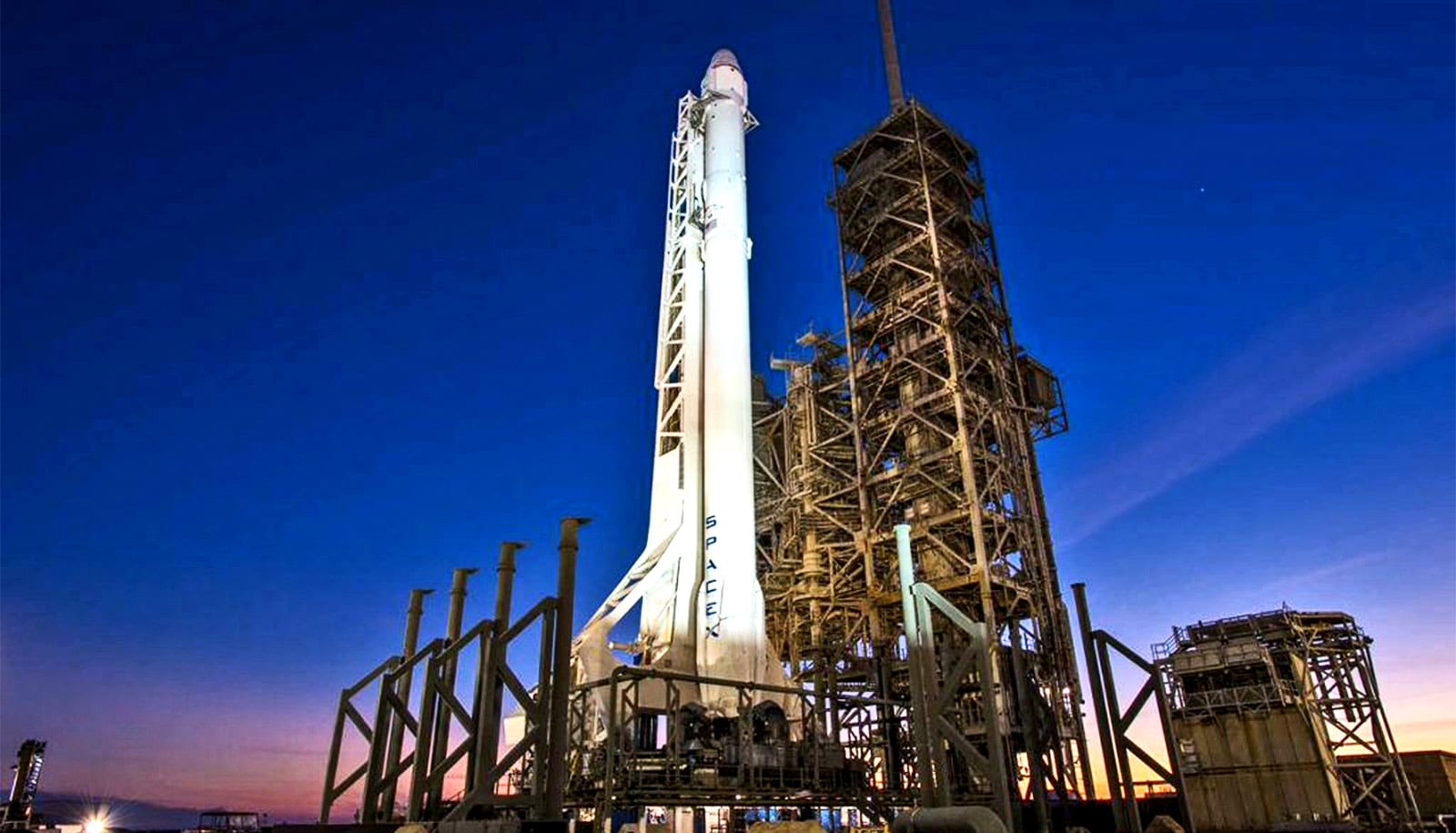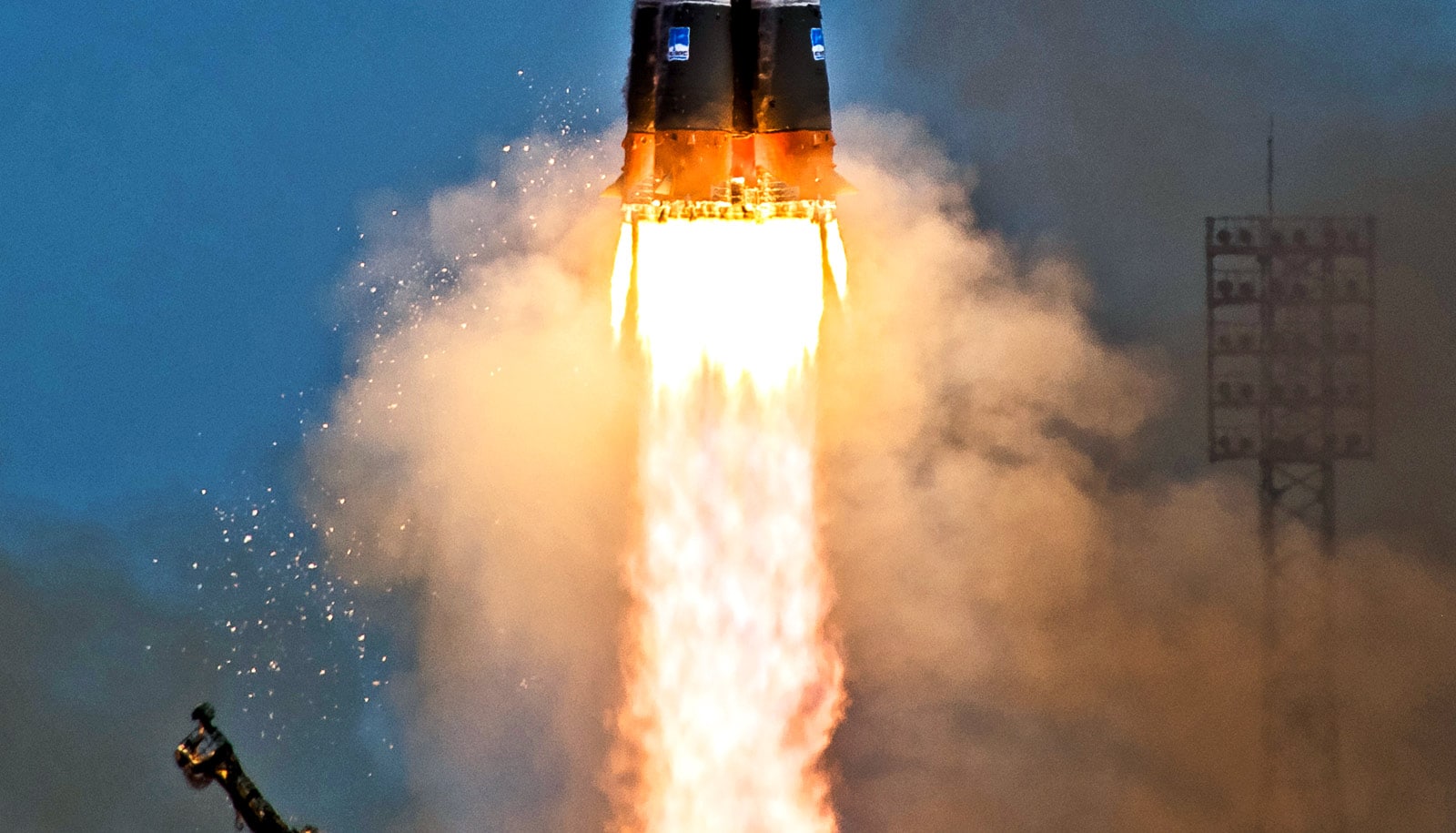Methods from scientific machine learning could address the challenges of testing the stability of rocket engines, researchers report.
Time, cost, and safety prohibit testing the stability of a test rocket using a physical build “trial and error” approach. But even computational simulations are extremely time consuming.
A single analysis of an entire SpaceX Merlin rocket engine, for example, could take weeks, even months, for a supercomputer to provide satisfactory predictions.
“Physical build and test is not only time-consuming and expensive, it can also be dangerous.”
Scientific machine learning is a relatively new field that blends scientific computing with machine learning. Through a combination of physics modeling and data-driven learning, it becomes possible to create reduced-order models—simulations that can run in a fraction of the time, making them particularly useful in the design setting.
The goal of the work, led by Karen Willcox at the Oden Institute for Computational Engineering and Sciences at The University of Texas at Austin, is to provide rocket engine designers with a fast way to assess rocket engine performance in a variety of operating conditions.
“Rocket engineers tend to explore different designs on a computer before building and testing,” Willcox says. “Physical build and test is not only time-consuming and expensive, it can also be dangerous.”
But the stability of a rocket’s engine, which must withstand a variety of unforeseen variables during any flight, is a critical design target engineers must be confident they have met before any rocket can get off the ground.
The cost and time it takes to characterize the stability of a rocket engine comes down to the sheer complexity of the problem. A multitude of variables affect engine stability, not to mention the speed at which things can change during a rocket’s journey.
“The reduced-order models being developed by the Willcox group at UT Austin’s Oden Institute will play an essential role in putting rapid design capabilities into the hands of our rocket engine designers,” says Ramakanth Munipalli, senior aerospace research engineer in the Combustion Devices Branch at Air Force Rocket Research Lab.
“In some important cases, these reduced-order models are the only means by which one can simulate a large propulsion system. This is highly desirable in today’s environment where designers are heavily constrained by cost and schedule.”
The new methods have been applied to a combustion code used by the Air Force known as General Equation and Mesh Solver (GEMS). Willcox’s group received “snapshots” generated by running the GEMS code for a particular scenario that modeled a single injector of a rocket engine combustor.
These snapshots represent the instantaneous fields of pressure, velocity, temperature, and chemical content in the combustor, and they serve as the training data from which Willcox and her group derive the reduced-order models.
Generating that training data in GEMS takes about 200 hours of computer processing time. Once trained, the reduced-order models can run the same simulation in seconds.
“The reduced-order models can now be run in place of GEMS to issue rapid predictions,” Willcox says.
But these models do more than just repeat the training simulation.
They also can simulate into the future, predicting the physical response of the combustor for operating conditions that were not part of the training data.
Although not perfect, the models do an excellent job of predicting overall dynamics. They are particularly effective at capturing the phase and amplitude of the pressure signals, key elements for making accurate engine stability predictions.
“These reduced-order models are surrogates of the expensive high-fidelity model we rely upon now,” Willcox says. “They provide answers good enough to guide engineers’ design decisions, but in a fraction of the time.”
The research appears in AIAA Journal. The Air Force Office of Scientific Research and Air Force Research Laboratory funded the research.
Source: UT Austin


